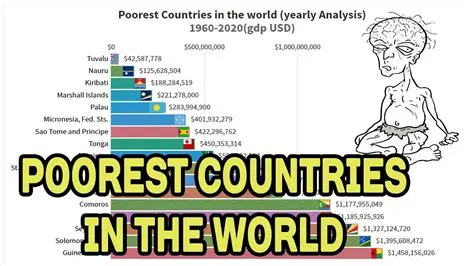In today’s blog post, we will be delving into the crucial topic of low production in an economy and its far-reaching effects. When a country grapples with low production, it sets off a chain reaction of economic challenges that can hinder growth and development. By understanding the root causes of low production and the negative impacts it has on the economy, we can begin to explore effective strategies to boost production and reap the benefits of a more productive economy. From examining the factors contributing to low production to exploring potential solutions, this blog post will provide valuable insights into the importance of addressing this issue and the positive outcomes that come with increasing production levels. Join us as we navigate through the complexities of low production in an economy and uncover the potential for growth and prosperity through enhanced production.
Understanding low production in an economy
Low production in an economy refers to the decreased output of goods and services in a country over a period of time. This can have detrimental effects on the overall economic health of a nation, leading to stagnation or even decline in economic growth.
Several factors can contribute to low production in an economy, including lack of investment in infrastructure, inadequate technological advancements, and inadequate skilled labor force. These factors can hinder the country’s ability to produce goods and services efficiently, ultimately leading to low production levels.
The impacts of low production in an economy can be severe, affecting the overall standard of living, employment opportunities, and the country’s competitiveness in the global market. It can also lead to inflation, reduced tax revenues, and increased reliance on imports, further worsening the economic situation.
Understanding the root causes of low production in an economy is crucial in order to implement appropriate strategies to address the issue. By increasing investment in infrastructure, promoting technological innovation, and investing in the education and training of the workforce, a country can work towards boosting production levels and improving its economic performance.
Causes of low production in a country
One of the major causes of low production in a country is lack of investment in infrastructure. Without proper roads, ports, and electricity, it becomes difficult for businesses to operate efficiently and effectively. This lack of infrastructure can lead to high transportation costs, delays in delivery of goods, and unreliable power supply, all of which can hinder production.
Another significant cause of low production is a lack of skilled labor. If the workforce does not have the necessary skills and training, it can result in poor productivity and low-quality output. This is particularly true in industries that require technical expertise, such as manufacturing and engineering.
Additionally, inadequate access to finance is a cause of low production. Without access to credit and financing options, businesses may struggle to invest in new equipment, expand their operations, or innovate. This can limit their ability to increase production and remain competitive in the market.
Finally, poor government policies and regulations can also contribute to low production in a country. Excessive bureaucracy, red tape, and corruption can create barriers for businesses, making it challenging for them to operate and grow. Inefficient and unpredictable regulatory environments can stifle investment and hinder production.
Negative impacts of low production on the economy
Low production in an economy can have devastating effects on the overall economic health. When a country experiences low production levels, it often leads to unemployment as businesses are unable to sustain their operations and are forced to lay off workers. This can lead to a decline in consumer spending and an overall decrease in the standard of living for many people.
In addition, low production levels can also result in reduced tax revenues for the government, which can have a significant impact on public services and infrastructure. The government may be forced to raise taxes or cut spending in other areas, further exacerbating the negative effects of low production on the economy.
Furthermore, low production can lead to a weakening of the country’s currency as exports decrease and imports increase. This can lead to inflation and a loss of purchasing power for consumers and businesses alike.
Overall, the negative impacts of low production on the economy can be far-reaching and long-lasting, affecting not only businesses and workers, but also the overall well-being of the country as a whole.
Strategies to boost production in a country
One of the key strategies to boost production in a country is to invest in infrastructure. By improving the transportation, communication, and energy systems, a country can reduce the cost of doing business and streamline the process of getting goods to market. This can lead to increased efficiency and productivity, ultimately boosting production.
Another important strategy is to invest in education and training. By ensuring that the workforce is skilled and up-to-date with the latest technologies and techniques, a country can improve the quality and quantity of its output. This can have a significant impact on the overall production levels in the country.
Additionally, governments can provide incentives for businesses to invest in research and development. By offering tax breaks or other financial incentives, businesses are encouraged to innovate and improve their products and processes, leading to greater production levels.
Finally, creating a stable and supportive business environment is essential for boosting production. This can involve reducing red tape, improving access to capital, and ensuring a stable regulatory environment. By creating an environment where businesses can thrive, a country can see significant increases in production levels.
Benefits of increasing production for the economy
Increasing production in a country’s economy can lead to significant economic growth and development. When a country produces more goods and services, it can create jobs and increase income for its citizens. This, in turn, can reduce poverty and improve living standards for the population.
Another benefit of increasing production is improving international competitiveness. When a country produces more, it can export its goods and services to other countries, leading to foreign exchange earnings and strengthened trade relationships. This can contribute to a country’s economic stability and global standing.
Moreover, increasing production can lead to innovation and technological advancement. As businesses strive to produce more efficiently, they often invest in research and development to improve their processes and products. This can result in new inventions and technological breakthroughs, which can benefit not only the country’s economy but also the global industry.
Lastly, increasing production can attract investment in the country. When investors see that a country has a high level of production, they may be more inclined to invest capital in its businesses and industries. This can lead to economic diversification and growth in other sectors, further strengthening the economy.
Frequently Asked Questions
What is low production in an economy?
Low production in an economy refers to a situation where the output of goods and services is below the potential level, leading to a decrease in overall economic growth.
What are the causes of low production in a country?
Causes of low production in a country can include factors such as lack of investment, inefficient use of resources, inadequate infrastructure, and external factors such as global economic downturns.
What are the negative impacts of low production on the economy?
Low production can lead to high unemployment, reduced income levels, lower living standards, and a decrease in government revenues, which in turn can hinder economic development and stability.
What are some strategies to boost production in a country?
Strategies to boost production in a country may include investing in infrastructure, promoting innovation and technology adoption, providing incentives for businesses to expand and invest, and improving access to education and training.
What are the benefits of increasing production for the economy?
Increasing production can lead to higher employment, increased incomes, improved living standards, and higher government revenues, which can ultimately lead to greater economic growth and stability.







